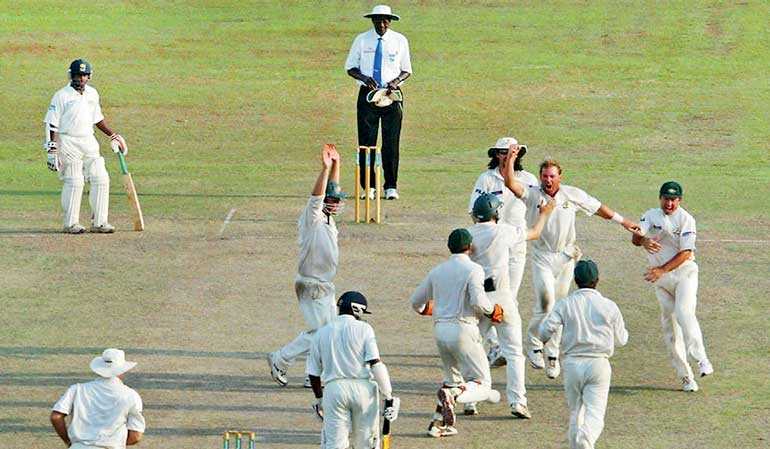Thursday Jan 23, 2025
Thursday Jan 23, 2025
Tuesday, 13 October 2020 00:00 - - {{hitsCtrl.values.hits}}

Test cricket could not have made a better return to Sri Lanka in 1992 than in the first Test against Australia at the SSC, where the hosts dominated the match for 4½ days and lost by 16 runs
By Sa’adi Thawfeeq
The present period of inactivity Sri Lanka’s cricketers are undergoing since their last international series against the West Indies ended in the first week of March, due to COVID-19 is far worse than the five-year hiatus Sri Lanka cricket went through from 1987-1992 with no international cricket teams touring the country due to the uncertainty that prevailed in the country due to the North-East War.
International tours to Sri Lanka came to an abrupt halt when at the end of the first Test between Sri Lanka and New Zealand which was played at the CCC grounds on 22 April 1987, a car bomb exploded near the team’s hotel in Colombo killing 113 civilians. The New Zealanders voted overwhelmingly to return home before the second Test as such an uneasy situation did not provide a satisfactory atmosphere for a touring team. In the interest of their safety, the tour was cancelled with 2 Tests and 3 ODIs remaining. The incident ensured that Sri Lanka did not host another international tour until 1992, although the Australian Cricket Academy and England ‘A’ both made tours in 1991.
The ice was broken when in August 1992’, Allan Border’s Australian team made a three-Test tour which was made possible by the then President of the Sri Lanka Cricket Board Ian Pieris and Secretary S. Skandakumar who did a lot of ground work to get international tours started to Sri Lanka once again.
At least during the ‘87-‘92 period, the Lankan cricketers at the time had the opportunity to tour overseas and play Tests and ODIs; take part in the inaugural Under-19 Cricket World Cup in Australia in 1988 and in two Cricket World Cups in 1987 and 1992. Although during that bleak period Sri Lanka played only 12 Tests and 47 ODIs – all overseas, the national cricketers had some kind of international cricket going for them, unlike in today’s context where the COVID-19 pandemic has brought about a total lockdown from international competitions and even threatened to wreck the domestic cricket that was on, until the emergence of a new COVID-19 cluster on 4 October.
This new threat has led to the suspension of the first tournament for the new 2020-21 domestic season that was on at the time. The SLC Major Clubs Youth (Under-23) tournament was in its final stages of completion when the semi-finals scheduled for 7 October and the final for 11 October were postponed.
SLC Tournament Committee’s Chairman Bandula Dissanayake said: “We spoke to Dr. Daminda Attanayake from the Sports Ministry this morning (Monday) and we have been asked to wait for another week. We have to get the approval from the Sports Ministry Medical Unit because they work with the Health Ministry. We’ll have to consult them again on Friday. Until such time we cannot recommence the tournament and decide on the dates for the semi-finals and final.”
The Major Clubs T20 tournament is due to commence on 22 October and Dissanayake said they will have to ‘wait and see’ whether it can go ahead as scheduled.
The current national players are experiencing the frustrations of being locked down from international cricket which is affecting their usual life styles. Unlike in the eighties and nineties when international was confined to Tests and ODIs, the physical demands on today’s cricketers is more with the advent of T20 cricket and they have attuned their bodies to meet such demands.
To suddenly become inactive without playing any sort of competitive cricket is certainly having a telling effect on their lives. National captain Dimuth Karunaratne and former captains Angelo Mathews and Suranga Lakmal have come out and expressed their feelings as to how the present lockdown is affecting their lifestyle as cricketers, as opposed to if touring frequently.
COVID-19 has brought the world to its knees and as of now, there doesn’t seem to be any light at the end of the tunnel.